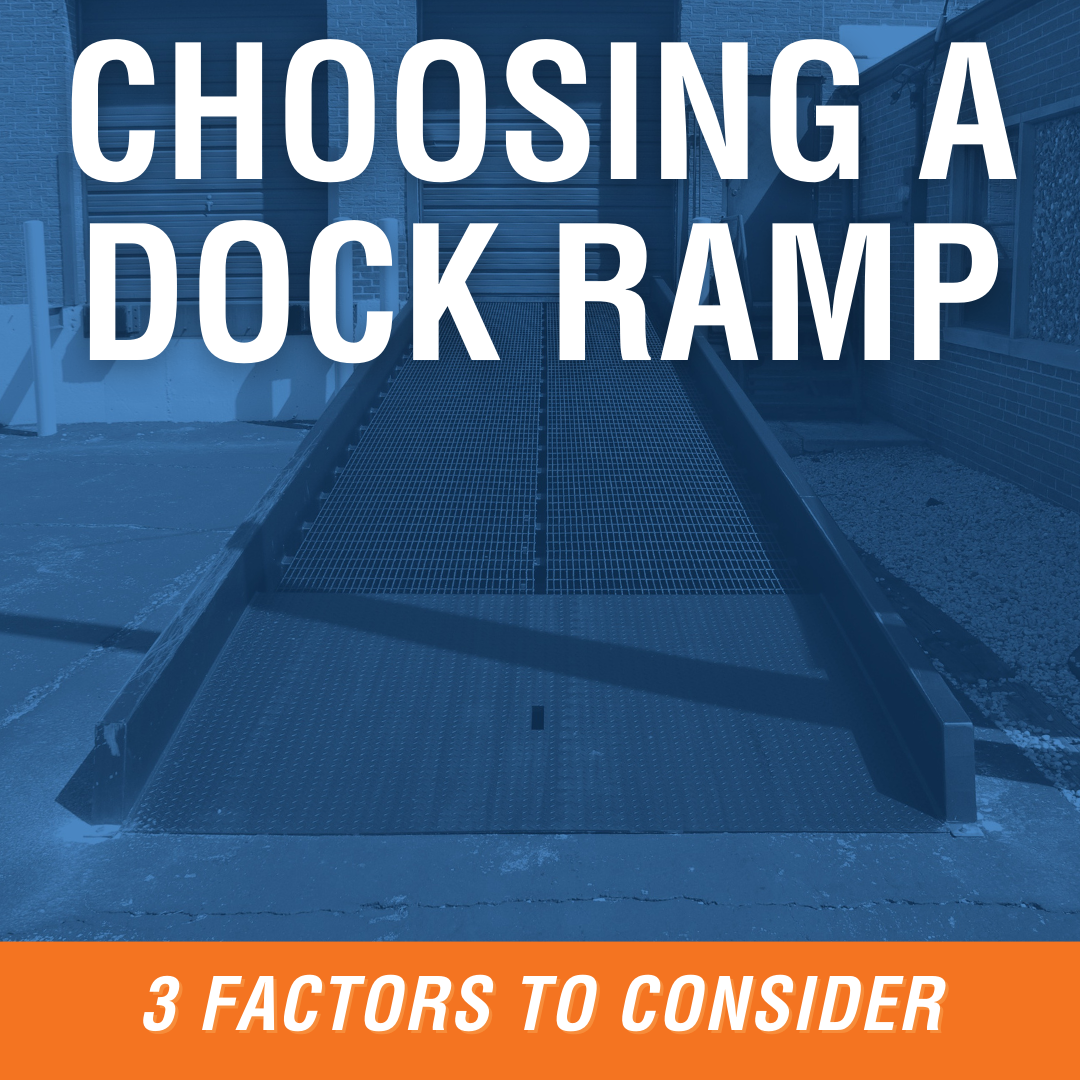We use cookies to make your experience better. To comply with the new e-Privacy directive, we need to ask for your consent to set the cookies. Learn more.
Choosing a Dock Ramp: 3 Factors to Consider
A dock ramp may not be the most exciting purchase, but in order to build a productive facility, you’ll need to load products and materials — and if your ramp isn’t appropriate for your operation, you’ll lose time (and money) with each load.

While most loading ramps are fairly simple equipment, they’re available in a range of materials, widths, and lengths. Here are a few tips to help you choose an appropriate option.
1. What types of vehicles will use the ramp?
A dock ramp might provide access for a variety of vehicles. Some facilities need to get lift trucks from the dock to the ground and back. Others load out onto last-mile delivery vehicles, like sprinter vans or parcel trucks. Each use case requires a ramp with specific design features:
Forklift Dock Ramps
For forklift travel between the dock and the ground, choose a ramp that’s flush with the dock edge. These ramps should usually be 20 to 30 feet long in order to keep the travel angle shallow. Look for solid-steel approach plates for a smooth transition at either end, and make sure ramps include safety curbs.
If ramps will be open to pedestrian traffic, choose a model with hand rails to reduce the risk of falls — and be sure to enforce safety protocols that keep forklifts and pedestrians from sharing the same travel path.
Explore Forklift Dock Ramps from BHS, Inc.
Last-Mile Loading Dock Ramps
Warehouse docks are often built for tractor trailers. With the continuing e-commerce boom, however, many of these facilities must serve more last-mile vehicles.
The standard loading dock, configured for trailers, stands between 48 and 52 inches high. Sometimes, the dock edge is up to 55 inches from ground level. That’s often too high for delivery vans and box trucks.
Related: Last Mile Delivery Ramps for Distribution Center Docks
The solution is a ramp built to bridge the gap. These ramps should also include curbs, for a safer approach. The ideal design features a ramp that provides elevation, terminating in a flat platform that keeps the truck level while you load it.
Learn about Delivery Vehicle Dock Ramps from BHS, Inc.
2. What’s an appropriate dock ramp capacity for the application?
Typical capacities for permanent/semi-permanent dock ramps range from 16,000 to 40,000 lbs. Heavy-duty options are essential when the application calls for forklift loading, but you’ll need to consider the specifics:
- How often will the ramp be used?
- What size are those vehicles?
- How much do the vehicles weigh?
On average, a forklift weighs about 9,000 pounds (not counting the weight of the load). Unloaded last-mile delivery vehicles typically weigh between 10,000 and 26,000 pounds. That’s the range of the Federal Highway Administration’s medium-duty category; smaller delivery vehicles, such as cargo vans, may go as low as 6,000 pounds.
It’s essential to plan for the vehicles that will use your ramp. Once you have those numbers in hand, you can choose a dock with suitable capacity.
Related: Mobile Loading Docks, Yard Ramps, and Dock Ramps: What to Know
3. Does the ramp comply with OSHA standards?
Needless to say, dock ramps must be engineered for the task at hand — and fully compliant with Occupational Safety and Health Association (OSHA) regulations.
Several OSHA standards are most relevant here:
- 29 CFR 1926.451(e)(5)(ii) – “No ramp or walkway shall be inclined more than a slope of one vertical to three horizontal (20 degrees above the horizontal).”
- 29 CFR 1910.178(n)(7) – “Grades shall be ascended or descended slowly.”
- 29 CFR 1910.178(m)(6) – “A safe distance shall be maintained from the edge of ramps…”
The grade of the ramp is particularly important for last-mile delivery ramps: Variances in vehicle height must be accounted for to ensure compliance (and to provide a safe, ergonomic work environment for your team). Additionally, facilities with nonstandard dock heights will need ramps custom-built to appropriate specifications.
The BHS Loading Dock Ramp can support any combination of dock placement and vehicle height, maintaining a gradual grade and ensuring smooth travel. The four-section, modular design allows for simple installation and relocation — and adds dock functionality without requiring new construction.
OSHA Guidelines for Forklift Traffic on Dock Ramps and Yard Ramps
All BHS dock ramps can be customized, and additional features (such as optional handrails) can help you optimize throughput while maintaining a compliant facility.
The right dock ramp can help your operation keep products and materials moving. To explore options, call our sales team at 1.800.BHS.9500.
